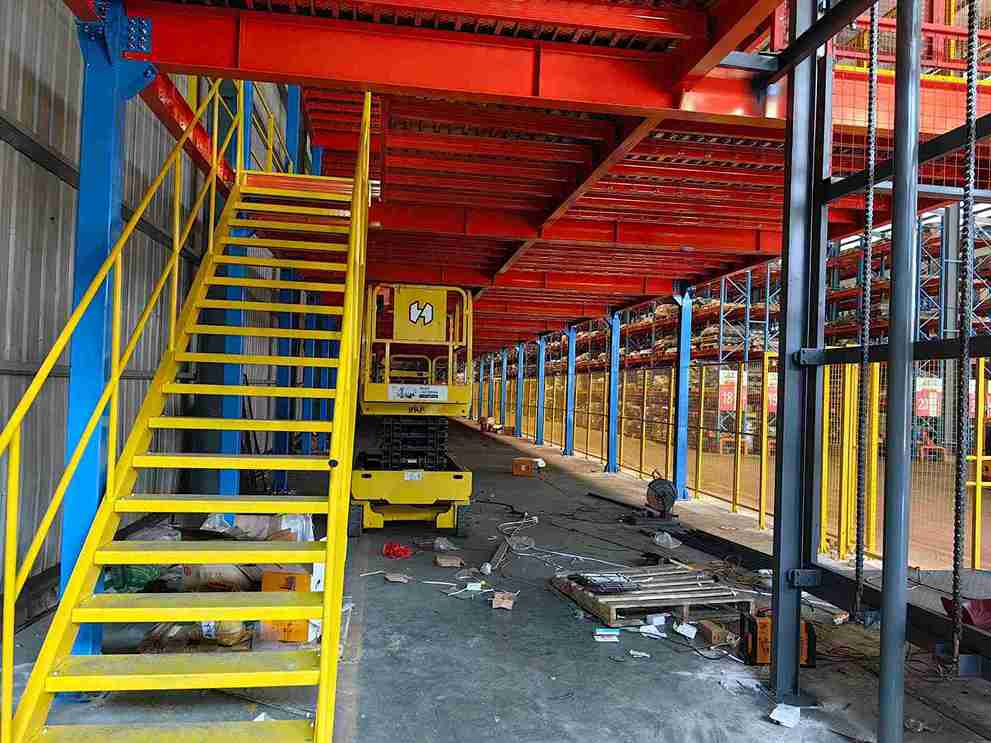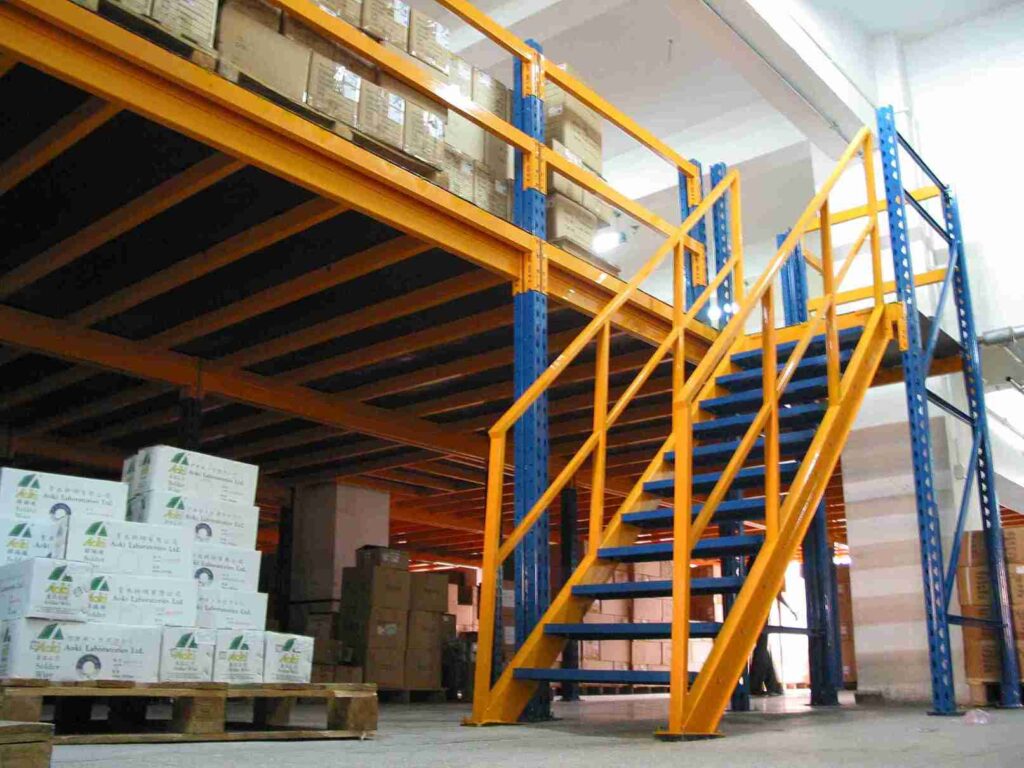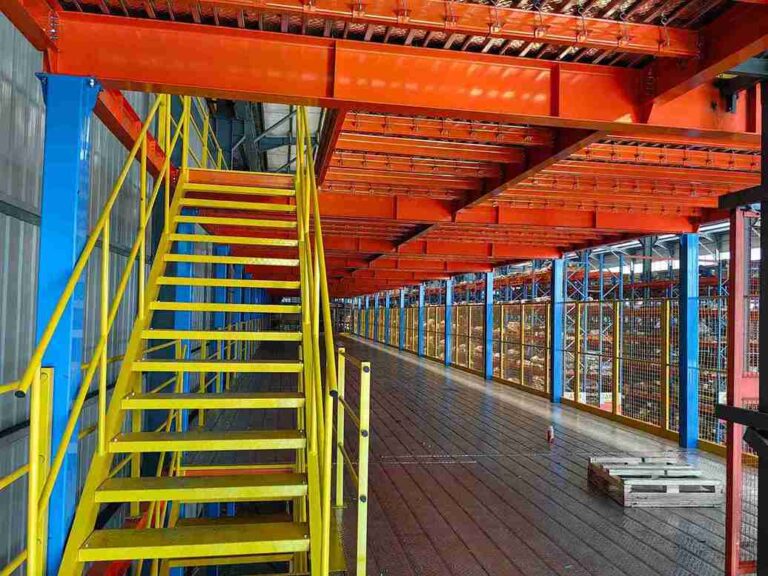📐 "First 50 Enterprise Queries Get Custom 3D Warehouse Design" Plan

The Future of Warehouse Efficiency with Modular Platforms & Stairs
In today’s fast-paced logistics and warehousing industry, maximizing space, improving worker safety, and integrating automation are top priorities. Modular platforms and stairs play a crucial role in achieving these goals. Unlike traditional fixed structures, modular platforms and stairs offer flexibility, scalability, and compliance with OSHA safety standards, making them ideal for warehouse automation, AGV/AMR systems, and high-density storage solutions.
At [Geelyracks], industry leaders in industrial storage solutions, we specialize in custom-engineered modular platforms and stairs that enhance workflow efficiency while ensuring worker safety. This comprehensive guide explores the benefits, applications, and key considerations when choosing OSHA-compliant modular platforms and stairs for modern warehouses.

1. Why Modular Platforms & Stairs Are Essential for Modern Warehouses
1.1 The Evolution from Fixed Structures to Modular Designs
Traditional welded platforms and stairs are rigid, difficult to modify, and often require costly downtime for installation. Modular platforms and stairs, on the other hand, are pre-engineered, easy to assemble, and adaptable to changing warehouse layouts.
For facilities implementing automated storage and retrieval systems (AS/RS), modular platforms and stairs provide the flexibility needed to accommodate new equipment without major structural changes.
1.2 OSHA Compliance & Worker Safety
Falls remain one of the leading causes of warehouse injuries. OSHA-compliant modular platforms and stairs incorporate critical safety features, including:
Anti-slip treads to prevent accidents in high-traffic areas
Guardrails & handrails designed to meet OSHA 1910.23 standards
High load capacity (up to 300 lbs/sq ft or more) for heavy-duty use
Easy access points for maintenance teams and automated systems
1.3 Seamless Integration with Warehouse Automation
As more warehouses adopt AGVs (Automated Guided Vehicles), AMRs (Autonomous Mobile Robots), and automated conveyor systems, modular platforms and stairs ensure smooth transitions between different workflow zones. Key advantages include:
Adjustable heights for seamless conveyor and robotic integration
Durable aluminum or steel construction for long-term reliability
Customizable layouts to fit narrow aisles and high-density storage configurations
2. Key Benefits of Modular Platforms & Stairs in Warehouse Automation
2.1 Faster Installation & Reduced Downtime
Unlike traditional welding, modular platforms and stairs bolt together quickly, minimizing operational disruptions. Many installations can be completed in 1-3 days, compared to weeks for conventional structures.
2.2 Customizable Configurations for Any Warehouse Layout
Every warehouse has unique requirements. Modular platforms and stairs can be tailored for:
Mezzanine access platforms for multi-level storage
Maintenance catwalks above conveyor lines
Conveyor crossover stairs for safe personnel movement
Robotic workstations with reinforced support
2.3 High Load Capacity for Heavy-Duty Use
Industrial environments demand durability. Modular platforms and stairs from [Your Company Name] are engineered to support:
Forklifts and pallet jacks
AGV traffic in automated warehouses
High-density shelving systems
2.4 Cost-Effective & Scalable Solutions
No welding required = lower labor costs
Reconfigurable as warehouse needs evolve
Expandable for future automation upgrades
3. How to Choose the Right Modular Platform & Stair System
3.1 Material Selection: Aluminum vs. Steel
| Feature | Aluminum | Steel |
|---|---|---|
| Weight | Lightweight | Heavy-duty |
| Corrosion Resistance | High (ideal for food/pharma) | Requires coating |
| Cost | Mid-range | More affordable |
3.2 OSHA & ANSI Safety Standards Checklist
Ensure your modular platforms and stairs meet:
OSHA 1910.23 (Walking-Working Surfaces)
ANSI MH28.1 (Industrial Platforms)
Local building codes
3.3 Integration with Existing Automation Systems
AGV/AMR-friendly ramps
Conveyor-compatible landings
Safety sensors & barriers
4. Top Applications of Modular Platforms in Smart Warehouses
4.1 Automated Storage & Retrieval Systems (AS/RS)
Access platforms for maintenance
Safety stairs for manual overrides
4.2 AGV/AMR Charging & Service Stations
Elevated docking stations
Modular maintenance catwalks
4.3 High-Density Racking Systems
Narrow aisle access stairs
Pick module platforms
5. Case Study: How [Client Name] Improved Efficiency with Modular Platforms
Challenge: A 3PL provider needed OSHA-compliant access to high-level conveyors without disrupting operations.
Solution: We installed bolt-together modular platforms and stairs in 48 hours, reducing installation time by 70%.
Results:
30% faster maintenance access
Zero OSHA violations
Scalable for future automation
6. Maintenance & Longevity of Modular Platforms
6.1 Routine Inspection Checklist
Check bolt tightness
Inspect anti-slip surfaces
Verify guardrail stability
6.2 Upgrading for Future Automation Needs
Adding robotic docking stations
Expanding platforms for new equipment
7. Why Choose [Your Company Name] for Modular Warehouse Solutions?
30+ years in industrial safety solutions
Custom-engineered designs
Fast installation & minimal downtime
Full OSHA & ANSI compliance
8. Frequently Asked Questions (FAQs)
Q1: Can modular platforms support forklift traffic?
Yes, our heavy-duty models are rated for forklifts, pallet jacks, and AGVs.
Q2: How long does installation take?
Most systems install in 1-3 days, depending on complexity.
Q3: Are modular stairs compatible with existing racking?
Absolutely—we design custom-fit solutions for any warehouse layout.
Q4: What’s the lifespan of a modular platform?
With proper maintenance, 20+ years (aluminum) or 30+ years (powder-coated steel).
Q5: Do you provide safety certifications?
Yes, all systems include OSHA/ANSI compliance documentation.
Conclusion: Optimize Your Warehouse with Modular Platforms & Stairs
Modular platforms and stairs are no longer optional—they’re a competitive necessity for modern warehouses. By choosing OSHA-compliant, automation-ready designs, you’ll improve safety, efficiency, and scalability while reducing long-term costs.
At [Geelyracks], we engineer bespoke modular solutions tailored to your automation needs. Contact us today for a free warehouse assessment!
Welcome to contact us, if you need warehouse rack CAD drawings. We can provide you with warehouse rack planning and design for free. Our email address is: jili@geelyracks.com




